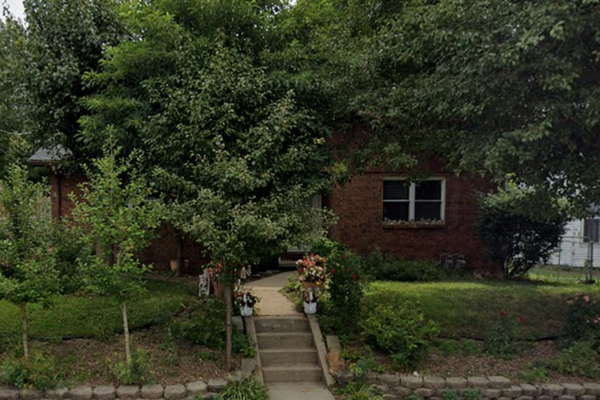
Paris is basking in an Olympics induced glow-up. With the Games en ville – that’s in town, for any non-French speakers – the authorities have injected some serious funds into their capital. Most visible has been cleaning up the river Seine – so that now, unlike the murky Thames, it’s now safe to swim in. (Well, nearly – the triathlon did have to be slightly delayed.)
But that’s not all that’s new in Paris. £35bn has also been spent on the Grand Paris Express, connecting 120 miles of new Métro lines between the suburbs. They’ve also upgraded the Grand Palais on the Champs-Élysées, built a new arena and aquatic centre, and created an Olympic village in the northern quarter of Saint-Denis – 30% of which will join the region’s public housing stock when all the medals have been handed out.
For some in the UK, all this regeneration will ring faint bells in their distant memory. When London hosted the Olympics in 2012, we too were told that our city would change for the better after the Games. There were promises of new sports venues, and landmarks for tourists to travel to. But did the Olympics really leave a permanent mark? Here, we explore the legacy of the British games, and wonder: what did London 2012 ever do for us?
Sports venues

First of all, obviously, hosting the Olympics needs venues where elite athletes can perform – and many were built for London 2012. Chief among them was the 80,000 new stadium near Stratford, the centrepiece of the Olympic Park, which hosted the Athletics that year – featuring Mo Farah, Jess Ennis, and Usain Bolt in his prime. After much debate, the venue is now called the London Stadium, and is home to West Ham football club..
As well as the Olympic stadium, there were several other sports venues built in the East London park. There is the Lee Valley VeloPark, with its velodrome and outdoor BMX track; the Copper Box Arena, which was used for handball, and now hosts many sports; and the Aquatics Centre, still in use by swimmers. Other arenas for basketball and water polo were temporary and removed after the Games, while a hockey venue was moved to become the Lee Valley Hockey and Tennis Centre nearby. Much of the surrounding area is also a large park, focused on restoring wetland habitats. Not all sports required a new venue: events like tennis were played at Wimbledon.
Housing

Just like in Paris, there were lots of promises made before London 2012 about how the Olympics would help our capital by creating huge amounts of new housing. There was particular excitement in the borough of Newham, which was told it would be regenerated, for the direct benefit of everyone living there. The idea was to produce as many as 40,000 new homes, a large number of which would be affordable.
However, the reality turned out to be much less impressive. In the end, only 13,000 homes were built on and around the Olympic site by 2022, according to the Guardian. Of these, only 11% are genuinely affordable to people on average local incomes. Even fewer have been built on the Olympic Park itself – fewer than 200 new homes offered at the cheapest levels of rent, when over 4,500 were pledged. Illustrative of the type of homes that were built are the Victory Plaza towers, which sit on the site of the former athletes’ village. They contain no affordable homes, and have rents starting at around £2,000 a month. While it was claimed that the athlete’s village would be publicly owned, it was sold in 2011 for around half what it cost to build, representing a £275m loss to the taxpayer. It was later found to have similar cladding to Grenfell Tower, causing grief for the Londoners who had made it their homes.
While not many of the housing promises were kept, London Citizens local community group have claimed some small victories, striking a deal that at least half of those working on the Olympic site would be local, that they’d be paid the London living wage, and a skills academy would be established to train local people.
Culture and business

During the Olympics, a huge media centre was built next to the sports events, a temporary home for 20,000 of the world's broadcasters, photographers and print journalists. That building, now known as “Here East” is currently used by business, charities and Universities. University College London opened its new UCL East campus in the park in 2023, while University of the Arts London's London College of Fashion also opened its new site there last year. In business, Transport for London’s main office is now also nearby.
More recently, it's hoped that the wider area will be an tech and arts hub – called the “East Bank”. It’s set to be home to offshoots of renowned organisations such as the BBC, who plan to move studios that were once in Maida Vale, a new ballet theatre for the Sadler’s Wells dance company, and the Victoria & Albert Museum, which is planning to open V&A East in 2025. The new V&A space pledges to “focus on how artists and designers work to transform our world for the better”, working as “a creative campus and social space” for diverse groups.
There were briefly plans for an “Olympic museum”, but they were shelved in 2013. Elsewhere, some of the Olympic Park has been repurposed for music venues. One of the hottest tickets in London over the last two years has been the money-making ABBA hologram tour, which is on at a purpose-built arena in the Olympic Park. On top of that, London Stadium doesn’t only host West Ham. It also hosts other concerts, by acts including Burna Boy and the Foo Fighters in Summer 2024.
Transport

As Paris found out when an arson attack threatened its train networks, travel infrastructure is central to a successful Olympics games. Predicting this, Transport for London aimed to improve the UK capital’s public transport before 2012. That included expanding London Overground's East London Line from Surrey Quays to Clapham Junction, via Peckham. TfL also increased capacity on the Docklands Light Railway, or DLR, as well as railways – investing in the North London Line, and putting on "Javelin" high-speed travel routes between Kings Cross and Stratford.
One less useful piece of travel infrastructure created for the Olympics was the London cable car, which crosses the River Thames between Greenwich Peninsula and the Royal Docks, and cost about £60 million to construct. Then mayor Boris Johnson boasted that it would be able to carry 2,500 passengers an hour, but it isn’t much used these days: at one point, it was used by only four regular commuters, freedom of information requests showed. The line lost its lucrative sponsorship deal with Emirates, and now has a cheaper deal with Swedish multinational IFS.
ArcelorMittal Orbit tower

An apocryphal story goes that Boris Johnson bumped into Britain's richest man, Lakshmi Mittal, in a cloakroom at the World Economic Forum in Davos in 2009. The then mayor persuaded Mittal to help with funds to build a landmark for London 2012. That tower became “Orbit”, designed by sculptor Anish Kapoor, Britain’s tallest sculpture. Johnson was boosterish about the tower, which eventually opened to the public. "It would have boggled the minds of the Romans," the mayor said. "It would have dwarfed the aspirations of Gustave Eiffel, and it will certainly be worthy of the best show on Earth, in the greatest city on Earth."
Sadly, the ArcelorMittal Orbit tower has not become a key tourist attraction. While its slide is impressive, the tower is currently closed for repairs, apparently set to reopen in early 2025. As long ago as 2019, visitor numbers were down to 155,000 a year – and are likely to have fallen since then. Back then, the tower was already £13 million in debt, as interest mounted on Mittal's loan (he didn’t actually donate the money). Reviews are not good: the Orbit tower was recently described by the New York Times as “possibly the worst public sculpture of the 21st century”.
Sports funding

The legacy of London 2012 wasn’t just supposed to stay in the capital. Officials promised to fund sports around the country, improving participation across the UK, and making Britons more healthy. However, their efforts weren’t entirely successful. A 2023 report by the House of Commons Public Accounts Committee said that while it was hoped that there would be a lasting legacy from the £8.8bn spent on the event in total, not all of the benefits have materialised.
Despite increased money, in the first three years following the games, the proportion of adults participating in sport at least once a week fell. That prompted a refocusing of the cash. However, that didn’t work either, and the report said that of the £1.5bn in grants distributed by Sport England since 2016, the body only knows where £450m of it was spent. And despite spending £323m a year since 2015, the Department for Digital, Culture, Media and Sport (DCMS) and Sport England have made little progress in tackling inequalities and the barriers to participation in sports, even in the parts of London where the games were held. Will Paris have more luck?







